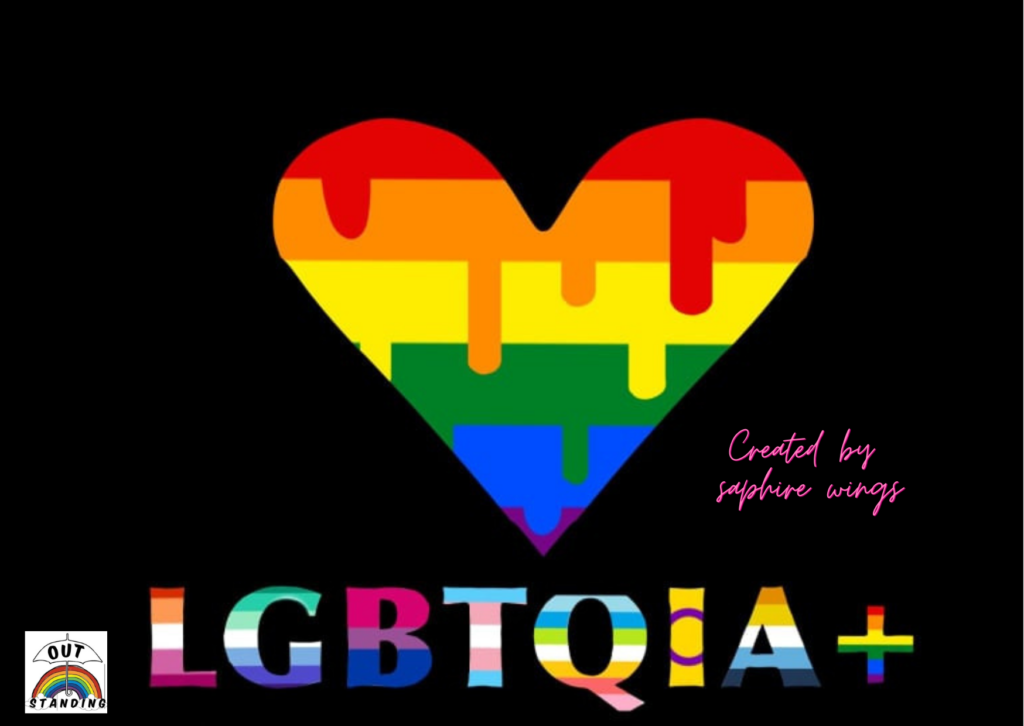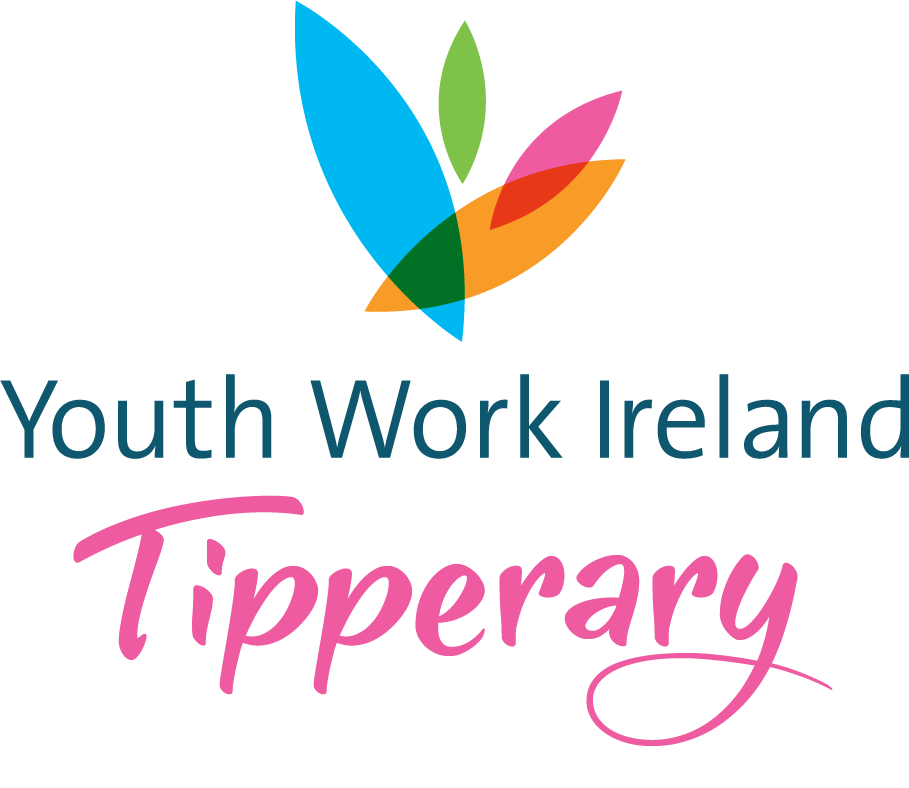
There is so much to think about here between, sexuality, sexual orientation, sex v gender, pronouns to name but a few topics. Below is a non-definitive list of terms you are most likely to hear in relation to the LGBTI+ community.
Helpful Terms and Definitions – TENI is a great resource and it is well worth a visit to their website in general. TENI stands for Transgender Equality Network Ireland.
LGBTI+ Glossary of Terms
Achillean – Typically referred to as MLM (Men Loving Men) or NBLM (Non-Binary Loving Men). An umbrella term that can describe bisexual, pansexual, gay and omnisexual men/non-binary people.
Ally – Someone who is a friend, advocate, and/or activist for LGBTI+ people. The term ally is generally used for any member of a dominant group who is a friend, advocate or activist for people in an oppressed group (i.e. White Ally for People of Colour).
Androgynous – Term used to describe an individual whose gender expression and/or identity may be neither distinctly “female” nor “male,” usually based on appearance.
Asexual – A sexual orientation generally characterized by not feeling sexual attraction or desire for partnered sexuality. Asexuality is distinct from celibacy, which is the deliberate abstention from sexual activity. Some asexual people do have sex. There are many diverse ways of being asexual.
Biphobia – The fear, hatred, or intolerance of bisexual people.
Bisexual, Bi – An individual who is physically, romantically and/or emotionally attracted to men and women. Bisexuals need not have had sexual experience with both men and women; in fact, they need not have had any sexual experience at all to identify as bisexual.
Cisgender – a term used to describe people who, for the most part, identify as the gender they were assigned at birth.
Closeted/ In the Closet – Describes a person who is not open about his or her sexual orientation.
Coming Out – A lifelong process of self-acceptance. People forge a lesbian, gay, bisexual or transgender identity first to themselves and then may reveal it to others. Publicly identifying one’s orientation may or may not be part of coming out.
Drag Queen/Drag King – Used by people who present socially in clothing, name, and/or pronouns that differ from their everyday gender, usually for enjoyment, entertainment, and/or self-expression. Drag queens typically have everyday lives as men. Drag kings typically live as women and/or butches when not performing. Drag shows are popular in some gay, lesbian, and bisexual environments. Unless they are drag performers, most Trans people would be offended by being confused with drag queens or drag kings.
Female-to-male (FTM) – This term and acronym is most commonly used to refer to trans males, trans men, and some transmasculine people who were assigned female at birth. It’s important to only use this term if someone prefers to be referred to this way, as some trans males, trans men, and transmasculine people use terms that don’t include or indicate the sex they were assigned at birth.
Gay – The adjective used to describe people whose enduring physical, romantic and/or emotional attractions are to people of the same sex (e.g., gay man, gay people). In contemporary contexts, lesbian (n. or adj.) is often a preferred term for women. Avoid identifying gay people as “homosexuals” an outdated term considered derogatory and offensive to many lesbian and gay people.
Gender Expression – Refers to how an individual expresses their socially constructed gender. This may refer to how an individual would dress, their general appearance, the way they speak, and/or the way they carry themselves. Gender expression is not always correlated to an individuals’ gender identity or gender role.
Gender Identity – Since gender is a social construct, an individual may have a self-perception of their gender that is different or the same as their biological sex. Gender identity is an internalized realization of one’s gender and may not be manifested in their outward appearance (gender expression) or their place in society (gender role). It is important to note that an individual’s gender identity is completely separate from their sexual orientation or sexual preference.
Gender Neutral – This term is used to describe facilities that any individual can use regardless of their gender (e.g. gender neutral bathrooms). This term can also be used to describe an individual who does not subscribe to any socially constructed gender (sometimes referred to as “Gender Queer”).
Gender Non-Conforming – A person who is, or is perceived to have gender characteristics that do not conform to traditional or societal expectations.
Gender/Sexual Reassignment Surgery – Refers to a surgical procedure to transition an individual from one biological sex to another. This is often paired with hormone treatment and psychological assistance. A “Transsexual” individual must go through several years of hormones and psychological evaluation and live as the “opposite” or “desired” gender prior to receiving the surgery (see intersex).
Gender Role – A societal expectation of how an individual should act, think, and/or feel based upon an assigned gender in relation to society’s binary biological sex system.
Heterosexual – An adjective used to describe people whose enduring physical, romantic and/or emotional attraction is to people of the opposite sex. Also straight.
Homosexual – Outdated clinical term considered derogatory and offensive by some gay and lesbian people. The Associated Press, New York Times and Washington Post restrict usage of the term. Gay and/or lesbian accurately describe those who are attracted to people of the same sex.
Homophobia – Fear of lesbians and gay men. Prejudice is usually a more accurate description of hatred or antipathy toward LGBT people.
Intersex – People who naturally (that is, without any medical interventions) develop primary and/or secondary sex characteristics that do not fit neatly into society’s definitions of male or female. Many visibly intersex babies/children are surgically altered by doctors to make their sex characteristics conform to societal binary norm expectations. Intersex people are relatively common, although society’s denial of their existence has allowed very little room for intersex issues to be discussed publicly. Has replaced “hermaphrodite,” which is inaccurate, outdated, problematic, and generally offensive, since it means “having both sexes” and this is not necessarily true, as there are at least 16 different ways to be intersex.
Kinsey Scale – Alfred Kinsey, a renowned sociologist, described a spectrum on a scale of 0 to 6 to describe the type of sexual desire within an individual. 0 being Completely Heterosexual – 6 being Completely Homosexual. The Kinsey Scale is often used to dissect the bisexual community and describe the differences between sexual orientation and sexual preference.
Lesbian – A woman whose enduring physical, romantic and/or emotional attraction is to other women. Some lesbians may prefer to identify as gay (adj.) or as gay women.
Male-to-female (MTF) – This term and acronym is most commonly used to refer to trans females, trans women, and some transfeminine people who were assigned male at birth. It’s important to only use this term if someone prefers to be referred to this way, as some trans females, trans women, and some transfeminine people prefer to use terms that don’t include or overtly indicate the sex they were assigned at birth.
Men Who Have Sex with Men – men, including those who do not identify themselves as homosexual or bisexual, who engage in sexual activity with other men (used in public health contexts to avoid excluding men who identify as heterosexual).
Nonbinary – Also referred to as enby, this is a gender identity and umbrella term for gender identities that can’t be exclusively categorized as male or female. Individuals who identify as nonbinary can experience gender a variety of ways, including a combination of male and female, neither male nor female, or something else altogether. Some nonbinary individuals identify as trans, while many others don’t. Whether a nonbinary person also identifies as trans is often dependent on the extent to which that person identifies, even partially, with the sex or gender assigned to them at birth.
Openly Gay – Describes people who self-identify as lesbian or gay in their personal, public and/or professional lives. Also openly lesbian, openly bisexual, openly transgender.
Outing – The act of publicly declaring (sometimes based on rumor and/or speculation) or revealing another person’s sexual orientation or gender identity without that person’s consent. Considered inappropriate by a large portion of the LGBT community.
Pansexual – not limited in sexual choice with regard to biological sex, gender, or gender identity.
Pronouns – You may be unfamiliar with the word “pronoun,” but you use them all the time! Pronouns are used in place of a proper noun (like someone’s name). We use pronouns most often when referring to someone without using their name.
Example: Have you heard from Tom? He hasn’t texted me back all day. He is the pronoun.
Queer – Traditionally a pejorative term, queer has been appropriated by some LGBT people to describe themselves. However, it is not universally accepted even within the LGBT community and should be avoided unless someone self-identifies that way.
Questioning – The process of considering or exploring one’s sexual orientation and/or gender identity.
Sapphic – Typically referred to as WLW (Women Loving Women) or NBLW (Non-Binary Loving Women). An umbrella term that can describe bisexual, pansexual, lesbian and omnisexual women/non-binary people.
Sex – The classification of a person as male, female, or intersex based on the existing system of organizing human bodies and biology. This system is based on chromosomes, hormones, internal and external reproductive organs, and secondary sex characteristics.
Sexual Orientation – The scientifically accurate term for an individual’s enduring physical, romantic and/or emotional attraction to members of the same and/or opposite sex, including lesbian, gay, bisexual and heterosexual (straight) orientations. Avoid the offensive term “sexual preference,” which is used to suggest that being gay or lesbian is voluntary and therefore “curable.”
Sexual Minority – An all-inclusive, politically oriented term referring to individuals who identify with a minority sexual orientation, sex identity, or gender expression/gender identity.
Sexual Preference – This term refers to an individual’s choice in regards to attraction. Sexual preference can be based on gender/sex, physical appearance (height, weight, race, ethnicity), or emotional connection. It is important to note that sexual preference denotes a “choice” and has a negative connotation when used to describe the LGBTQ population.
Straight – Pop culture term used to refer to individuals who identify as a heterosexual, meaning having a sexual, emotional, physical and relational attraction to individuals of the “opposite” gender/sex. The term “straight” often has a negative connotation within the LGBTQ population, because it suggested that non heterosexual individuals are “crooked” or “unnatural”.
Transgender or trans – Both an umbrella term including many gender identities and a specific gender identity that describes those with a gender identity that’s different from the sex assigned at birth (male, female, or intersex).
Transvestite – This term is often thought to be outdated, problematic, and generally offensive, since it was historically used to diagnose medical/mental health disorders.
Zie & Hir – The most common spelling for gender neutral pronouns. Zie is subjective (replaces he or she) and Hir is possessive and objective (replaces his or her).
For more information on gender v sex and understanding what pronouns are and why they are important please watch this video:


